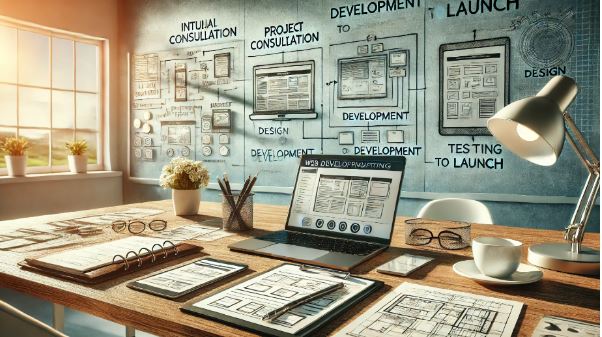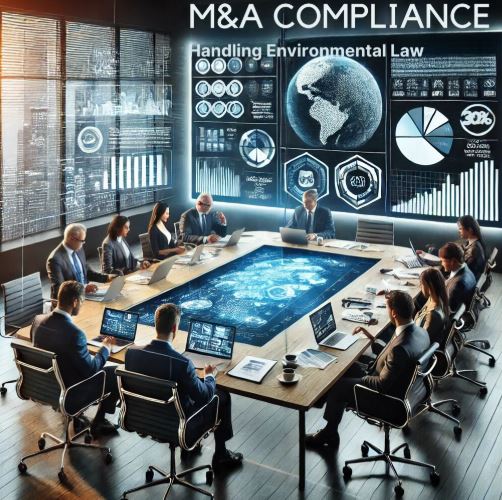Understanding the Web Development Consulting Process: From Initial Consultation to Launch
Introduction: What Does a Web Development Consultant Actually Do?
Starting a website or web application project can feel overwhelming. If you’re a business owner or team lead, you may find yourself asking, “How do I get the technical guidance I need?” or “What steps do I need to follow to ensure my project is a success?”
This is where web development consulting becomes crucial. Web development consultants provide expertise at every stage, offering guidance on everything from choosing the right technology stack to ensuring the project meets your business goals and technical requirements.
A consultant doesn’t just build websites—they help you make informed decisions, avoid costly mistakes, and ensure a smooth journey from concept to launch. Let’s break down the web development consulting process step-by-step, so you know exactly what to expect.
Benefits of Working with a Web Development Consultant
There are many reasons why having a consultant on board can be beneficial. Here are just a few:
- Strategic Expertise: Consultants bring in-depth knowledge of current web technologies, helping you pick the right tools for your project.
- Objective Perspective: As an external expert, a consultant can provide impartial advice on project goals, usability, and technical feasibility.
- Project Management: A consultant can streamline the development process, providing a structured timeline and ensuring that each phase is completed on schedule.
- Cost and Time Savings: By reducing inefficiencies and errors, a consultant can save you time and money over the course of the project.
Whether it’s a small website revamp or a complex web application, a consultant guides you through each step, maximizing the chances of success.
Step-by-Step Guide to the Web Development Consulting Process
To fully understand the process, let’s go through each stage of web development consulting, from initial consultation to final launch.
Step 1: Initial Consultation – Defining Your Vision and Goals
The first step is usually an initial consultation, where the consultant meets with you to discuss your project vision. During this phase, the consultant will ask questions to understand your objectives, target audience, and the functionality you need. Here’s what this might look like:
- Identifying Key Objectives: What do you want the website to achieve? Whether it’s driving sales, capturing leads, or delivering a service, these objectives shape the project.
- Understanding Your Audience: Knowing who the users are helps in designing a user-friendly interface and experience.
- Budget and Timeline Discussions: The consultant will help define a realistic budget and timeline based on your goals and available resources.
This phase is essential for ensuring that the entire team has a clear understanding of the project’s purpose and objectives from the outset.
Step 2: Project Planning – Structuring the Development Roadmap
After the initial consultation, the consultant will create a project plan that outlines each phase of development, including milestones and timelines. This is often known as the discovery phase, as it involves gathering all necessary information to create a well-organized project roadmap.
- Scope Definition: The consultant will help you clarify the scope, listing all key features and functionalities. A clear scope avoids “scope creep,” where the project expands beyond the initial plan, potentially impacting costs and deadlines.
- Wireframes and Mockups: Often, the consultant will create basic sketches or digital wireframes of the site’s layout, giving you a visual representation of the design and functionality.
- Technical Requirements: The consultant will determine the technical specifications, such as hosting requirements, software integrations, and security features.
By the end of this phase, you’ll have a structured plan for development and a clearer picture of the site’s layout and functionality.
| Planning Stage | Key Tasks |
| Scope Definition | Clarifying project scope, avoiding scope creep |
| Wireframes and Mockups | Basic visual layouts of site |
| Technical Requirements | Hosting, integrations, security, software choices |
Step 3: Design Phase – Creating a User-Centric Experience
With a clear plan in place, the design phase focuses on creating an engaging and intuitive user experience (UX). The consultant collaborates with designers to ensure that the site’s look aligns with your brand while being user-friendly.
- User Experience (UX) Design: A consultant ensures the site is designed for ease of use, guiding users through a logical flow from one page to the next.
- User Interface (UI) Design: The UI design involves choosing color schemes, fonts, and other visual elements to create an appealing look.
- Accessibility Standards: Ensuring the website is accessible to people with disabilities is increasingly important. Consultants often prioritize WCAG standards (Web Content Accessibility Guidelines) to make the site inclusive.
The goal of this phase is to create a design that not only looks great but also enhances user satisfaction and engagement.
Step 4: Development Phase – Bringing the Design to Life
In the development phase, the consultant works closely with developers to turn the design into a fully functional website or application. This phase includes several key steps:
- Front-End Development: This involves coding the user-facing part of the site, including elements like layout, navigation, and interactivity. Technologies like HTML, CSS, and JavaScript are commonly used.
- Back-End Development: This is where the consultant and development team handle the site’s “behind-the-scenes” components, like databases, servers, and applications. Back-end development is critical for data management, security, and scalability.
- Content Management System (CMS) Setup: If the site requires a CMS (like WordPress or Drupal), the consultant will set up and customize it to your needs.
The consultant plays a crucial role in ensuring that the development is executed according to plan and that each function works smoothly before moving on.
Step 5: Testing and Quality Assurance – Ensuring a Flawless Experience
Once development is complete, the consultant guides the project through a rigorous testing phase to ensure everything works as expected. This phase addresses any issues that could affect user experience, security, or performance.
- Functionality Testing: Ensuring that all features, from forms to buttons, are working as they should.
- Compatibility Testing: Testing the site on various devices (desktop, mobile) and browsers to ensure consistency.
- Load Testing: Simulating high-traffic scenarios to ensure the site can handle peak loads.
- Security Audits: A consultant will often perform security checks to safeguard sensitive data, protecting against threats like malware and data breaches.
By the end of this phase, the consultant ensures that the site or application is stable, secure, and optimized for user engagement.
Step 6: Launching the Website – Going Live with Confidence
The launch phase is one of the most exciting yet crucial parts of the consulting process. Here’s what to expect as you approach the go-live date:
- Final Preparations: The consultant checks each element once more, ensuring every detail aligns with the project goals.
- DNS Configuration: Configuring the Domain Name System to ensure users can access the website.
- Backup and Security Measures: Establishing backups and security protocols to protect the site after launch.
- Launch Strategy: Some consultants recommend a “soft launch” where the site goes live to a smaller audience to catch any remaining issues.
The consultant’s expertise ensures a smooth launch, minimizing the risk of unexpected issues and setting up post-launch success.
Step 7: Post-Launch Support and Maintenance
After launch, the work doesn’t stop. The consultant often provides ongoing support to ensure the site runs smoothly and continues to meet your goals. This stage may include:
- Regular Updates: Keeping the site’s software, plugins, and security protocols up to date.
- Monitoring Performance: Using analytics tools to track user behavior, traffic patterns, and site performance.
- Troubleshooting Issues: Addressing any post-launch bugs or technical challenges.
- Implementing Improvements: Based on user feedback and analytics, the consultant can suggest new features or enhancements.
Ongoing maintenance helps keep the site relevant, secure, and optimized for performance, which is essential for long-term success.
FAQs
How long does the consulting process take?
Project timelines can vary widely, from a few weeks for simpler sites to several months for complex applications.
Do I need to hire a consultant if I already have a developer?
A consultant can provide strategic direction and project management expertise that complements a developer’s technical skills.
How much does a web development consultant cost?
Consulting fees vary based on the scope and complexity of the project. Consultants often charge hourly, or by project, with rates depending on experience.
Conclusion:
The web development consulting process provides a structured, step-by-step path from concept to launch, making the journey less intimidating and more efficient. With a clear roadmap, expert advice, and hands-on support, a consultant ensures that your project stays on track and meets your objectives.
Understanding this process allows you to approach web development with confidence, knowing that each phase—from initial consultation to post-launch support—adds value and helps you achieve a successful outcome.
Whether you’re building a small website or a complex web application, having a consultant by your side can make all the difference in achieving a polished, user-friendly final product.
Also Read : Robots Dot to Dot Nattapong



